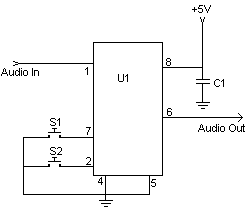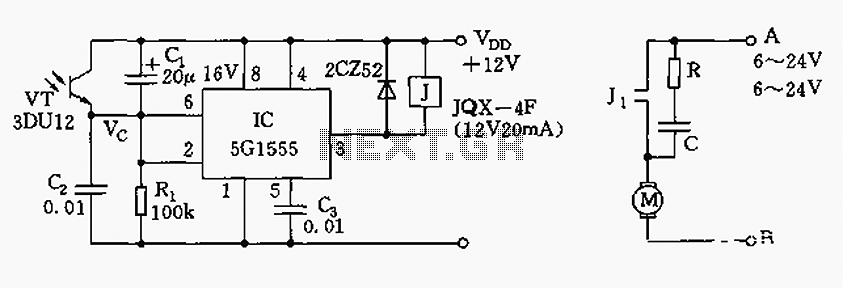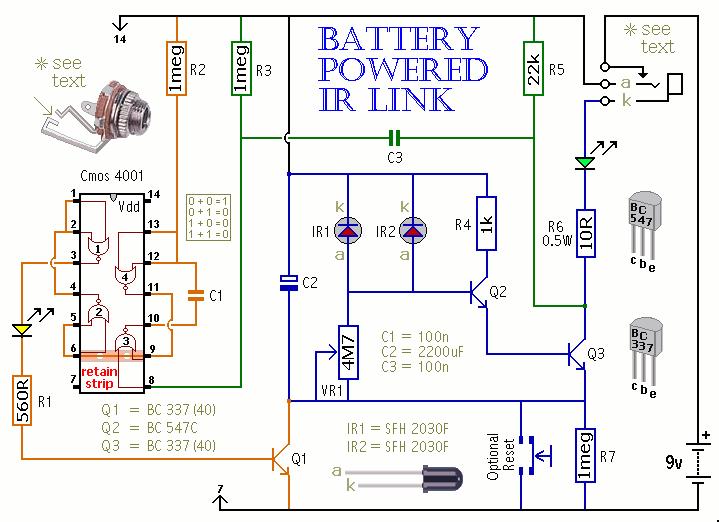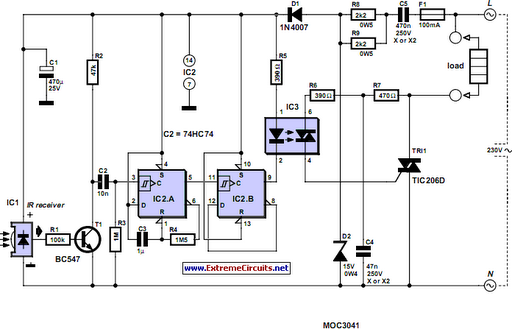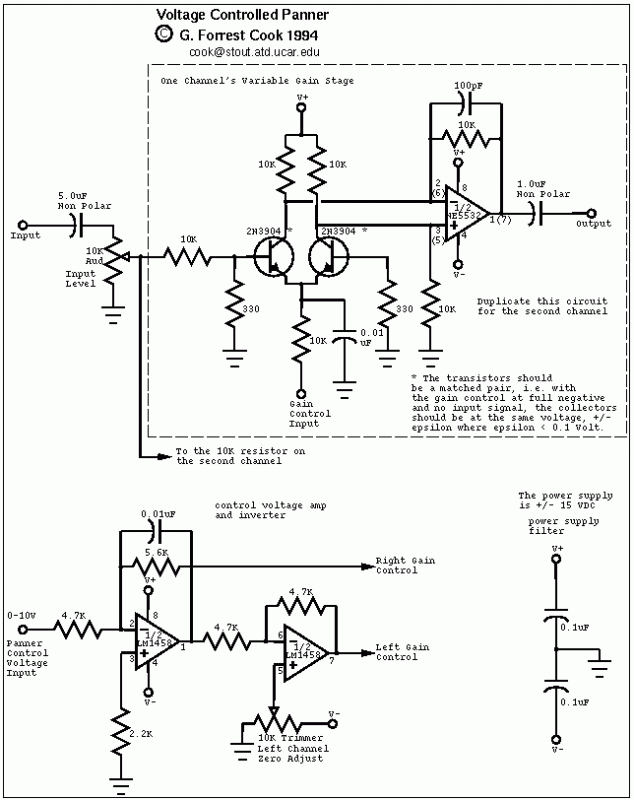
tv remote control jammer
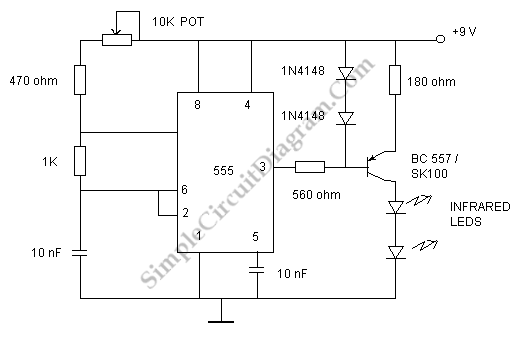
This is a TV remote control jammer circuit. Remote controls use modulated light to combat interference from background infrared noise. Your room heater, etc.
The TV remote control jammer circuit is designed to disrupt the operation of infrared remote controls by emitting modulated infrared signals that interfere with the signals sent from the remote control to the television. This circuit typically consists of an infrared LED, a modulation circuit, and a power supply.
The infrared LED serves as the primary emitter of the jamming signal. It is driven by a modulation circuit that generates a pulsed signal at a frequency similar to that of standard remote control devices, which typically operate in the range of 30 kHz to 40 kHz. This modulation is crucial as it allows the jammer to effectively mask the signals emitted by legitimate remote controls.
The power supply for the circuit can be a simple battery or a regulated power source, depending on the design requirements. It is essential to ensure that the power supply provides sufficient current to the infrared LED for effective jamming without overheating or damaging the components.
In terms of layout, the circuit should be designed to minimize interference with other electronic devices and should incorporate proper shielding to prevent unintended emissions. The use of a microcontroller can enhance the functionality of the jammer by allowing for adjustable modulation frequencies and the ability to turn the jamming signal on and off as needed.
Safety and legal considerations must be taken into account when using or building a remote control jammer, as jamming signals can interfere with legitimate communications and may be regulated or prohibited in certain jurisdictions.This is a TV Remote Control Jammer circuit. Remote control use modulated light to combat eer infrared nvironment/background infrared noise. Your room heater,.. 🔗 External reference
The TV remote control jammer circuit is designed to disrupt the operation of infrared remote controls by emitting modulated infrared signals that interfere with the signals sent from the remote control to the television. This circuit typically consists of an infrared LED, a modulation circuit, and a power supply.
The infrared LED serves as the primary emitter of the jamming signal. It is driven by a modulation circuit that generates a pulsed signal at a frequency similar to that of standard remote control devices, which typically operate in the range of 30 kHz to 40 kHz. This modulation is crucial as it allows the jammer to effectively mask the signals emitted by legitimate remote controls.
The power supply for the circuit can be a simple battery or a regulated power source, depending on the design requirements. It is essential to ensure that the power supply provides sufficient current to the infrared LED for effective jamming without overheating or damaging the components.
In terms of layout, the circuit should be designed to minimize interference with other electronic devices and should incorporate proper shielding to prevent unintended emissions. The use of a microcontroller can enhance the functionality of the jammer by allowing for adjustable modulation frequencies and the ability to turn the jamming signal on and off as needed.
Safety and legal considerations must be taken into account when using or building a remote control jammer, as jamming signals can interfere with legitimate communications and may be regulated or prohibited in certain jurisdictions.This is a TV Remote Control Jammer circuit. Remote control use modulated light to combat eer infrared nvironment/background infrared noise. Your room heater,.. 🔗 External reference
